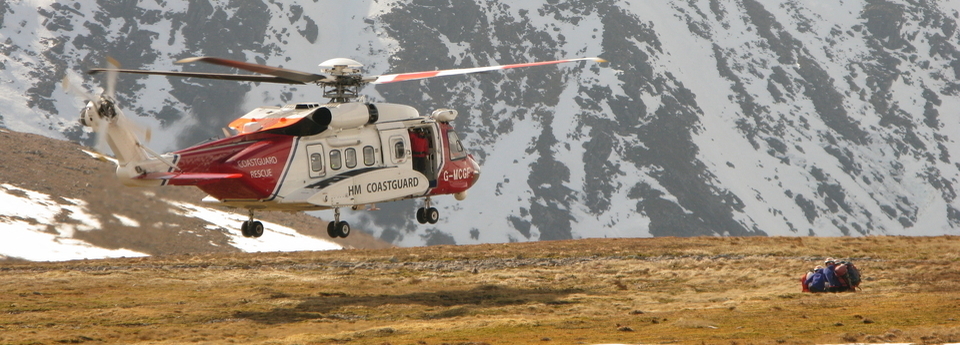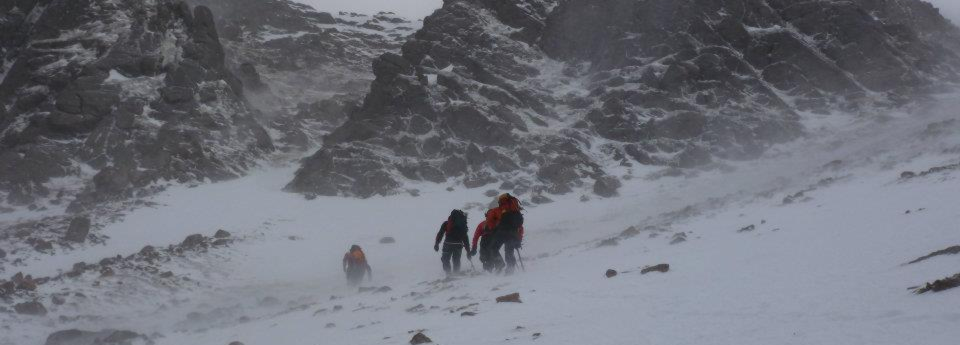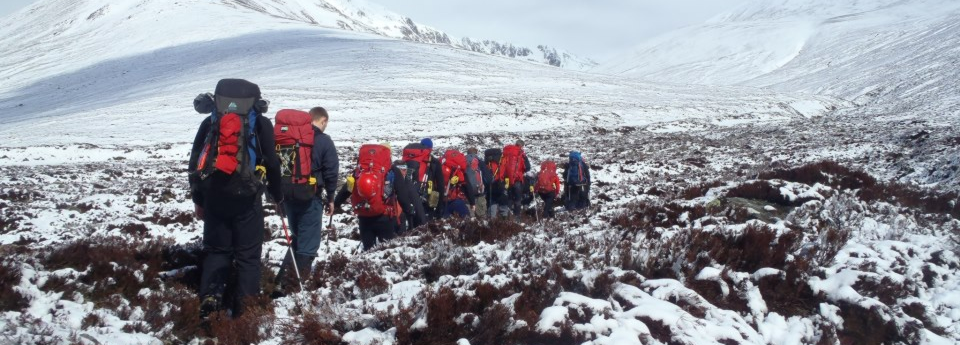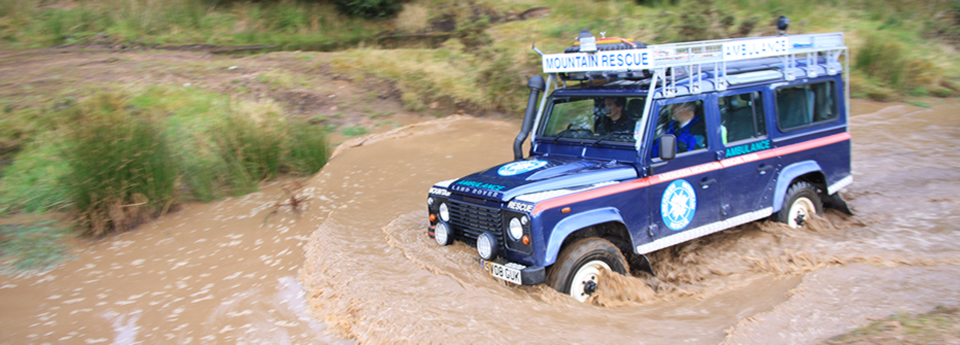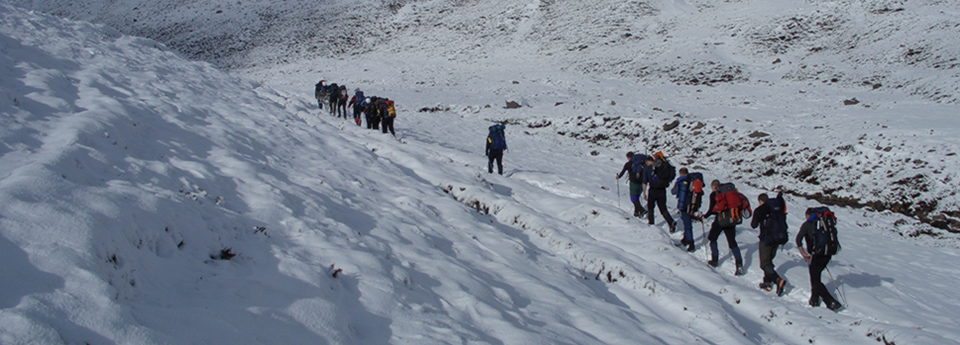Team Leaders' Report 2006
As has been the case for a number of winters now, the winter of 2005/2006 was quick to start but rather slow to develop. Early snow fall and unseasonably low temperatures in October and November 2005 gave some early ski-ing and ice climbing; unfortunately this did not last, and the first two months of 2006 saw many frustrated skiers, climbers and walkers wandering if they should be thinking of going abroad for their annual fix of winter “white stuff”. The snow did eventually arrive in March, and then proceeded to fall in such quantities that we were still “playing” in it in mid May. That our climate is changing is something I fear we can no longer deny, and it certainly seems to be the case that as a consequence, the nature and extent of Scotland’s winter mountaineering activities are also changing.
For the Team it was, in common with most of Scotland’s rescue teams, a quiet start to 2006. We used the late snowfall to try and fit in a whole winter’s worth of training in the space of two months; indeed we did manage to involve most of the Team in a number of extremely valuable extended winter training events. As always our objective is to try and ensure that Team members are primarily highly competent mountaineers, and that they also have the extended range of skills necessary to undertake rescues in what can be the worst of weather and conditions.
The range of callouts in 2006 once again covered a wide variety of situations and circumstances. In March, Team members were involved in searching rough ground to the south of Aberdeen for a young boy who was reported missing overnight – fortunately this turned out to be something of a false alarm when the youngster turned up safe and well the following morning at the home of a friend! Nevertheless it highlighted once again the value of having a cadre of trained personnel able to undertake search activities on difficult ground even at low level. Most of the Team’s rescue activities were of course centred on the Cairngorms, and as the year progressed we were involved in a number of searches in the Lochnagar area and in the central Cairngorms.
In late October the Team was involved in a particularly telling incident which resulted in the long and difficult evacuation of a sixteen year old girl from high on the side of Cairntoul. Difficult weather conditions meant that the Lossiemouth based RAF search and rescue helicopter was unable to make what we all hoped would be a quick and simple evacuation. Over the years we have all come to rely on the remarkable flying skills of the RAF search and rescue helicopter pilots; on this occasion however the weather was simply too bad for them to make an attempt at a rescue, and it became apparent that it was going to have to be done the old fashioned way with ground based teams walking in and carrying the casualty out. Fortunately, by the time we had evacuated the casualty to Corrour Bothy the weather had improved a little, and a helicopter was then able to get to Corrour and effect an airborne evacuation. This callout has once again highlighted the fact that mountain rescue remains essentially a ground based activity with the need for highly trained and committed individuals prepared to make considerable physical effort, regardless of the weather conditions.
Training
As always our training is an important focal point for our activities throughout the year. In the course of the early part of 2006 we had several new Team members in training, and despite the lack of decent snow we did attempt to cover the essential of winter mountaineering and mountain rescue. Over the last two years we have worked hard to inject more realism into our training and this has, I believe, made our training more challenging and demanding as we ease Team members out of their “comfort zone”. The challenge of training new Team members whilst maintaining the interest and motivation of the older “hands” is something that we give a lot of thought to, and I think that we can be proud of the range and scope of the training events which we organise.
Although within the Team we have a considerable depth and breadth of experience, we have actively started to try, where possible to use outside providers to deliver some elements of our training. In 2006 for example we sent several Team members on avalanche courses which were organised and run through the Mountain Rescue Committee of Scotland. These courses are heavily subsidised by the MRC of S and do give Team members the opportunity to keep abreast of the latest thinking, and experience first hand new techniques in avalanche assessment and rescue. Additionally it is a great opportunity for Team members to meet up with colleagues from other teams and to share their experience and expertise.
In October we held a joint training exercise with Braemar Mountain Rescue Team and Grampian Police Mountain Rescue Team. The exercise was based on a number of “workshops” where we were able to look at different aspects of technical rescue and first aid; these sessions are always extremely useful and help to foster a close working relationship between the Teams. This particular exercise culminated with the evacuation of two casualties from a particularly challenging location, which allowed Team members the opportunity to work on a wide variety of skills and techniques.
In an average year the Team trains on seventeen weekends with generally one day being given over to a “training session”, and a second day to developing and extending local knowledge and personal mountaineering skills. This combined with training sessions virtually every Thursday evening throughout the year constitutes a very heavy training load, and I suspect amounts to one of the most demanding training programmes of any mountain rescue team in the country. The plus side is that I believe, it also makes us one of the most effective.
Team Membership and Resources
In the course of 2006 we lost a number of Team members who because of work or family commitments were forced to resign from the Team. Like most voluntary organisations recruitment is an ongoing issue and one that we are constantly working on – getting the right people into the Team and maintaining a high quality professional approach is generally easier said than done. The demands of training and the potential anti social nature of belonging to a mountain rescue team can be a major hurdle for prospective Team members. Our aim is to try and ensure that we have thirty Team members on the callout list at any one time, and despite the fact that we operate close to a large centre of population this has always proved to be a challenge. As 2006 came to a close we actually had thirty three Team members on the callout list, and this should ensure that the team is well placed to handle anything that comes our way during the forthcoming winter.
In addition to being well placed with regard to Team members in terms of both number and ability, the Team is also in the fortunate position that we continue to enjoy the use of a superb base at Elrick. It is now difficult to remember what it was like to run the Team before we had our own dedicated base, and many of the more recent recruits to the Team have only ever known the excellent facilities that we presently have. The ongoing support and generosity of the Order of St John in providing our garage and training facilities can not be overstated, and together with the financial support which the Team receives from the Aberdeen and St John Mountain Rescue Association I feel that the Team is fortunate indeed in the level of support it receives; all of which contributes of course to the overall effectiveness of the organisation in undertaking its various search and rescue activities. I really must also thank, on behalf of the Team, AMEC who in the course of 2006 generously provided protective clothing and footwear for Team members. This equipment was donated to assist with low level searches in difficult ground and I have no doubt it will see considerable use in the months ahead. Many other individuals and organisations have assisted us in the course of the year and to all of them I would like to offer my thanks and gratitude; only through their ongoing support can the Team survive and develop.
And Finally!
Finally, 2006 marked my fourteenth year as Team Leader and my thirty-sixth year in the Team. In the course of my time in the Team I have had the privilege of working with many fine people; working together, sometimes in difficult and challenging situations, has a way of bringing the best out of people and also bringing them together. Close friendships and a strong sense of camaraderie have been forged over the years, and I feel very fortunate that the Team has played such a large part in my life. I am of course also very aware of the sacrifices that Team members and their families make on a regular basis to sustain the Team, and I would like to end my report by simply extending my heartfelt gratitude and thanks to all those who in the course of the last year have helped to support the Team.
Mario Di Maio
Team Leader
